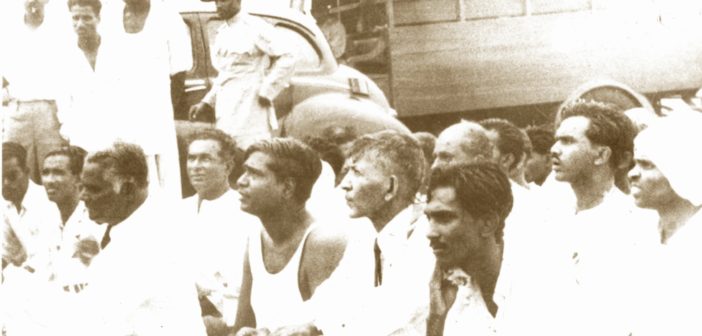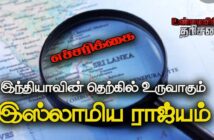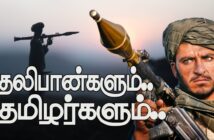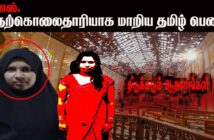The island of Sri Lanka, then known as Ceylon, was ceded to the British Crown in 1802 by the Treaty of Amiens of that year. The map of Ceylon attached to the Treaty of Amiens call the Arrow Smith Map of Ceylon depicts the Island of Ceylon as two (if not three) different countries- a Tamil country composed of the Northeast and a Sinhala country composed of the South West and central parts.
In an oft quoted minute, Sir Hugh Cleghorn wrote in June 1799 to the UK Government:
“Two different nations from a very ancient period have divided between them the possession of the Island. First the Sinhalese, inhabiting the interior of the country in its Southern and Western parts, and secondly the Malabars who possess the Northern and Eastern Districts. These two nations differ entirely in their religion, language and manners.” (Malabar meaning Tamil).
Also an illustrious Chief Justice, Sir Alexander Johnstone wrote on 01.07.1827 to the Royal Asiatic Society of Great Britain and Ireland thus:
“… I think it may safely be concluded both from them and from all the different histories which I have in my possession, that the race of people who inhabited the whole of the Northern and Eastern Provinces of the Island of Ceylon, at the period of their greatest agricultural prosperity spoke the same language, used the same written character, and had the same origin, religion, castes, laws and manners, as that race of people who at the same period inhabited the southern peninsula of India…”
The Cleghorn Minute of 1799 and the Arrow Smith Map of 1802 are official proofs that the Island of Ceylon consisted of two separate countries. We quote Sir Alexander Johnstone’s letter merely to show to what conclusions even a Chief Justice had come to on the basis of evidence he had.
It is important to remember that the British Government became masters of the whole island only after the fall of the Kandyan Kingdom in 1815 and the Vanni Chieftains in 1818 and looked at this Island from the distant West as a geographical unit and not as political or national states.
It was only in 1833 that the administration was unified under a single machinery. It would be appropriate here to mention that though the British Government unified the administration in 1833 it incorporated the different native administrative structures that existed earlier, with the Kachcheri system which it introduced. This shows that the British did not want to make a break with the past. Local and customary laws were allowed to govern relations amongst members of the community. The Roman Dutch Law, introduced by the Dutch in the maritime areas, was continued as the common law of the Island. This is very instructive. No system of law that existed before the RDL could cover the entire Island. This is again testimony to the fact that the Island was not one country.
The new class of English-educated elite could not bridge the differences between the two peoples in the Island and convert them into a homogenous single nation. In our view this is an impossible task.
The proceedings before the Donoghmore and Soulbury Commissions are an eloquent testimony to the failure of attempts to create a homogenous single “Ceylonese” nation. Needless to say with the departure of the British in 1948 the Tamils in this Island were left to the mercies of the Sinhalese, thanks to the inequitable constitution that was adopted. It is also relevant to mention that Lord Soulbury who headed the last Royal Commission on constitutional reforms, regretting, said that, had he had the experience which he later acquired in regard to the affairs of Ceylon, the would have made other recommendations.
Apart from incorporating the native administrative system of the different areas into the Kachcheri system introduced by the British, they were careful not to disturb the existing power balance between the different racial groups. In the Legislative Council membership was based on communal representation and there was an agreed proportion between the Sinhalese and the Tamils. Over the times this was changed and during the days of the Legislative Council (1924 to 1931) the proportion between Sinhalese and Tamils was 2:1. There were 16 Sinhalese members to the 8 Tamils. Further, the representation in the legislature was subject to the Devonshire formula that no single community should be in a position to out vote all the others combined.
The Donoughmore Constitution, for reasons best known to itself, made a declaration that territorial representation promoted national thinking but community based representation promoted thinking along communal lines. Very curiously Governor Sir Andrew Caldecot and the Soulbury Commissioner, as well as the Colonial Office, thought in identical terms. They gave no explanation for dropping the clearly enunciated Devonshire formula adopted fro multiracial colonies as well as proportional representation agreed to between the Sinhalese and the Tamils.
However, upon independence in 1948, the British Government did persuade the Sinhalese only Board of Ministers to accept the principle of a non-discrimination clause in the Constitution. Accordingly Article 29 of the Soulbury constitution granted powers to the Parliament to make laws for peace, security and good Government and specifically denied capability to the Parliament to make laws discriminatory to, in favour of or adverse to any one community which were not equally applicable to the other communities.
This provision in the Constitution was accompanied by a solemn assurance from the floor of the House by the then undisputed leader of the Sinhalese, the late Rt. Hon. DS Senanayake, that no harm would befall the Tamils by their joining the Sinhalese in working the constitution.
The Privy Council had held that this Article 29 was an entrenched clause and rendered the constitution and not the Parliament sovereign. This provision together with the assurance by Rt. Hon. DS Senanayake, makes the polity of the Dominion of Ceylon a conditional polity. The condition is obviously an assurance of the ethnic majority that they will not avail themselves of the numerical superiority to discriminate against the Tamils.
However on innumerable occasions this condition was violated and serious acts of discrimination did take place. That definitely gives the junior partner, the Tamils, the right to opt out of the polity.
Be that as it may, in 1970, an ingenious device was resorted to deprive the Tamils of the constitutional safeguards and the characteristics of the conditional polity. Three Sinhalese political parties acting in coalition called upon the people to give them a mandate (in the 1970 General Elections) to scrap the dominion polity and create a brand new Republic of Sri Lanka. Of course the response of the voters to the call for a mandate was magnificent but only from the seven Sinhalese provinces.
The voters of the Northern and Eastern Provinces summarily rejected the call for a mandate. The voting figures are given below:-
The Response for the call for the mandate-General Elections-1970
| Northern Province (13 electorates) | |
| Total votes polled | 334,360 |
| Votes granting mandate | 16,179 |
| Eastern Province(9 electorates, 11 seats) | |
| Total votes polled | 342,518 |
| Votes granting mandate | 79,323* |
| Total of total votes polled | 676,878 |
| Total of votes granting mandate | 95,502 |
| Percentage secured for the mandate | 14% |
* includes Sinhalese voters who were brought into colonization schemes after 1948.
It was a Constituent Assembly which did not have the support of the Tamil people, and from which the representatives of the Tamil people walked out, which enacted the autochthonous Republican Constitution of 1972. It was a constitution which has no legal continuity with the past. The Tamil nation did not consent to its enactment. Once there is a break in legal continuity the sovereignties of the inhabitants of the Island until then under eclipse so to speak, appear once again. Hence the sovereignty of the Tamil nation which was ethnically, geographically and linguistically separately identifiable and distinct, revived. The legal and constitutional deficiencies in Sri Lanka’s claim to encompass the North and East should now be apparent. Sri Lanka is no successor to the earlier polities of the British dominion. Sri Lanka was constituted without the authority of the people of the North and East.
The alleged territorial jurisdiction and sovereignty for the whole Island claimed by the Sri Lankan Government are constructed on a false premise. Sri Lanka has no legitimate or legal claim to encompass the North and East, the homeland of the Tamils-Tamil Eelam. Historically the territory called Jaffna Patam that belonged to the Tamil Nation lay in the northern and eastern portions of Ceylon form the limits of Puttalam and Mannar to the Kumbukkan Oya.
In his July 1983 Report on ‘Ethnic Violence, the Independence of the Judiciary, Protection of Fundamental Rights and the Rule of Law in Sri Lanka-Fragile Freedoms?’ Mr. Timothy J. Moore, M.P. of the Australian Section of the ICJ commented:
‘The proponents of Tamil Eelam argue that the northern and eastern provinces of Sri Lanka coincide with the historic boundaries of the kingdom of Jaffna and argue a case that seeks to establish that sovereignty over these territories was never ceded to any conqueror and that, even if such concession had been made at any time in the past, the unilateral renunciation of links with the United Kingdom which took place at the assumption of office by the government of Mrs. Srimavo Bandaranaike in 1972 resuscitated the Tamil sovereignty which had merely laid dormant until then… In the abstract theory of international law, it would appear that the Tamils have at the very least, an arguable case, and possibly a sustainable one.’
It is our submission that the Government of Sri Lanka is suffering from want of legitimacy over the northern and eastern provinces and the ongoing war is one born out of the legitimacy crisis. So it is our submission that liberal and democratic forces of the world must begin to realise the incompatibility of keeping the Tamil nation and the Sinhalese bound together and accept the position of the Tamils and decide to de-recognise the northern and eastern provinces as part of Sri Lanka. In the circumstances the insistence by certain sections of the international community on ‘unity, sovereignty and territorial integrity of Sri Lanka’ is untenable and works against the legitimate aspirations of the Eelam Tamil Nation.
The above paper was presented by International Federation of Tamils at the seminar TOWARDS A JUST PEACE (organised to examine the issues that confront the struggle of the people of Tamil Eelam and suggest steps to a just peace in the island of Sri Lanka), 15th February 1992 at the School of Oriental and African Studies, University of London




